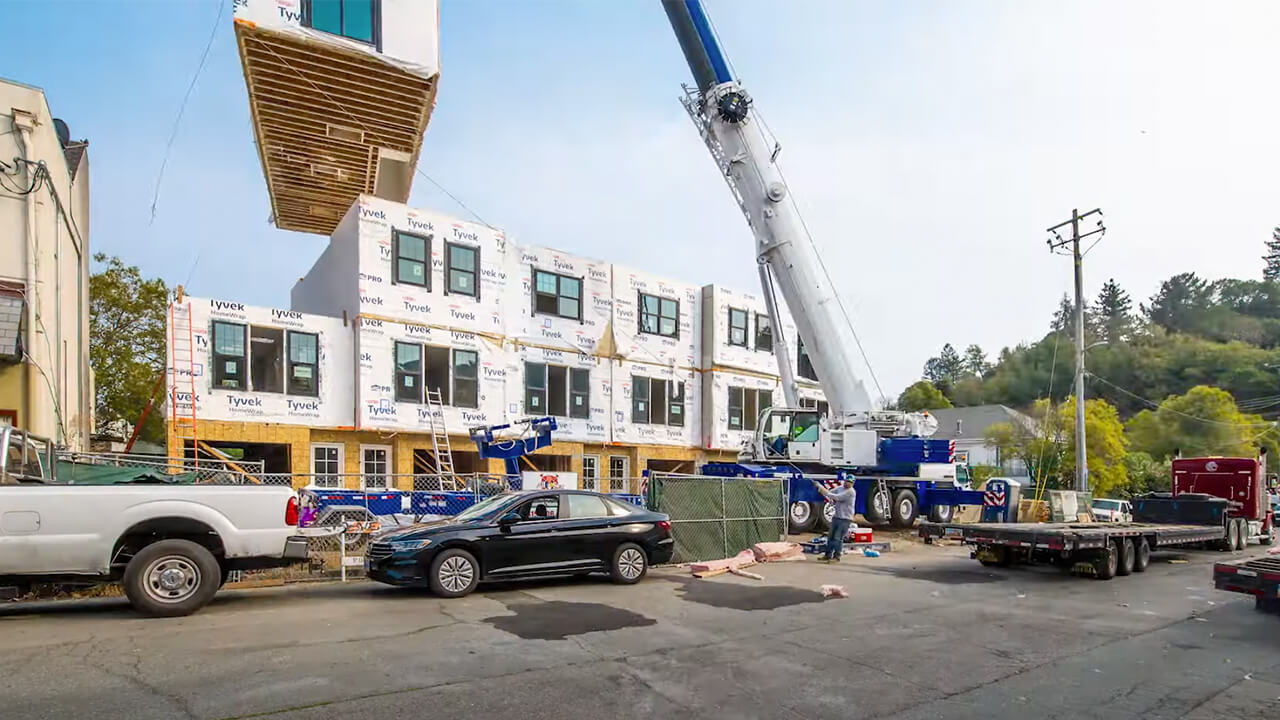Momentum Behind Modular in 2024 and 2025
Prefab and modular construction are no longer niche concepts. They are gaining real traction as a more efficient and design-driven alternative to traditional site-built homes. Prefab construction rose by 40% in 2024, showing that more homeowners, developers, and influencers are recognizing prefab as a faster, more efficient, and design-forward way to build.
In California, modular homes have become a go-to option for wildfire recovery. Homeowners are choosing factory-built homes that are significantly faster to deliver and often hundreds of thousands of dollars cheaper than traditional rebuilds. In Australia, the government allocated A$54 million in the 2025 federal budget to promote prefab and modular construction. In the Netherlands, prefab accounted for 21% of all new residential construction.
Media coverage is growing as well. CNN Style featured prefab cabins as a rising trend, highlighting brands like Unity and BrightBuilt Home, and calling prefab homes “the future of construction” in New England. Architect Magazine hosted a panel at CA Boom 2025 titled “The Four Women of Prefab,” showcasing leading architects and their modular designs. On YouTube, prefab content is booming. Kerry Tarnow, a leading creator in the space, named Irontown Modular’s Cabana 500 the number one prefab home of 2024, praising its blend of minimalist design, comfort, and practicality.
From eco-conscious cabins to space-efficient urban studios, prefab homes are making their mark.
So Why Isn’t Prefab Mainstream Yet?
Even with all this momentum, modular construction hasn’t gone fully mainstream. Why? There are still four major barriers holding it back:
Financing: A Learning Curve for Lenders
One of the biggest issues is financing. Many banks still treat modular homes as unfamiliar or nonstandard, especially when they don’t neatly match traditional real estate categories. A Pew Charitable Trusts report found 54% of manufactured home loan applications were rejected in 2021, compared to just 7% for site-built homes.Appraisals can also be inconsistent, and some lenders require extra steps for construction loans on modular builds.
But this is slowly changing. As more modular homes are built and resold, appraisers and underwriters are gaining more data and confidence.
Zoning and Local Codes: A Patchwork of Policies
Zoning and permitting remain some of the most time-consuming aspects of any modular project. Regulations vary not only by state but often by city or county, and many of those rules were written with only stick-built homes in mind.
This slows the process, increases design complexity, and creates unnecessary red tape. That said, more jurisdictions are starting to modernize their codes as the need for efficient housing grows in cities like Jackson, Mississippi, and states like Maine.
Perception and Stigma: The “Trailer Park” Myth
Perhaps the biggest misconception is the idea that prefab homes are cheap, temporary, or lower quality. Many people still equate the term “modular” with “mobile home,” even though today’s prefab homes meet (or exceed) the same building standards as traditional homes. This misconception causes problems, especially when lenders and appraisers treat modular homes as mobile.
At Irontown, we build homes that meet strict local and state codes, and we often go beyond minimum structural and energy standards. Our homes range from compact ADUs to sprawling multi-module residences like this custom two-story build, showing that prefab is not limited in size, form, or finish.
Delivery and Site Logistics: Bigger Isn’t Always Easier
Prefab can simplify a lot, but delivery and site access can still be complex. Oversized loads, tight site conditions, and crane requirements all play a role. In urban or remote settings, coordinating delivery and setting can drive up costs or cause delays.
Experienced prefab builders account for these variables early in the design process. At Irontown, our team works closely with general contractors and site engineers to make sure delivery day goes smoothly.
The Bottom Line: Prefab Is Evolving Fast
The good news? Each of these barriers is being chipped away.
- Lenders are learning how to underwrite modular projects
- Cities are rewriting outdated zoning codes
- Homebuyers are seeing the reality, not the stereotype
- Builders are solving delivery logistics with smarter planning
With nearly 50 years of experience in modular construction, Irontown is proud to be part of this shift. As more people discover the value of prefab, we’re building homes that are faster to deliver, beautiful to live in, and ready for what’s next.

